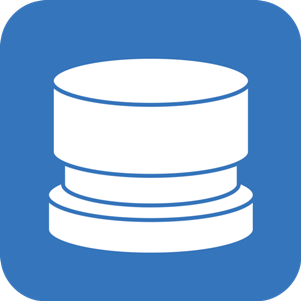 The two “one button” simplified video recording studios at the Pennsylvania State University (PSU) Library’s Tombros and McWhirter Knowledge Commons have proven exceptionally popular, and are now used for about 4,500 recording sessions per year, according to Justin Miller, Media Commons project manager for Penn State Educational Technology Services.
The two “one button” simplified video recording studios at the Pennsylvania State University (PSU) Library’s Tombros and McWhirter Knowledge Commons have proven exceptionally popular, and are now used for about 4,500 recording sessions per year, according to Justin Miller, Media Commons project manager for Penn State Educational Technology Services.
“The student population at University Park [campus] is around 45,000 students. So we’re seeing, per year, a group the size of ten percent of our student body using two rooms on a campus that is probably a mile long,” Miller said. “It’s fantastic for us.”
The studios, which enable students to produce professional quality presentations and green screen recordings by simply plugging a flash drive into a USB port and pressing a single button, were initially launched in February 2012. Usage has grown rapidly ever since, and Penn State’s Media Commons team has continued to refine the studio model while rolling it out to the university’s other commonwealth locations across the state. In November 2013, the team released a free Mac app, enabling other libraries and universities to build their own one button studios. And, this summer, the studios were recognized at the American Library Association’s annual conference as a “Cutting Edge Technology” trend.
Penn State’s media commons has long offered professional equipment and in-person assistance to help students create multimedia and video recordings. Traditional studios outfitted with MiniDV high-definition cameras, lighting kits, and professional audio equipment were once a staple at more than 20 campuses throughout the state. Yet, “it was increasingly difficult to get students to use that space,” Miller said. “The cameras were complex, the workflow was complex, it was time consuming.”
A few years ago, the Media Commons department acquired several Flip Video recorders to loan out, and the simple handheld units soon demonstrated that there was significant demand on campus for an easy-to-use recording solution.
“Those were great, because they had one big red button on the back,” Miller said. Students and faculty could just press the button and start recording with no fuss. “Everybody started using those, and nobody was using the studios whatsoever.”
The problem, however, was that the Flip Video recorders produced poor quality recordings, comparable to what might be produced with a cell phone. When used in the field, many videos suffered from bad lighting and lots of background noise.
“The projects that students were turning out weren’t great or were difficult to hear, but they were doing them,” Miller said. “We thought, ‘what if we could achieve that same workflow, but have the controlled environment of the studio?’”
A proof of concept AppleScript was written in late 2010, and a new position was created to hire a developer, who then wrote the current Mac app using Objective-C. Whenever a user plugs in his or her USB drive, the app recognizes that a new volume has been mounted, and then sends out commands that turn on the lights and camera, as the One Button Studio Setup Guide explains. Video and audio streams are directed through an h.264 encoder, which compresses the recording. When the user presses the button, the app starts with a countdown, and then begins recording the compressed video onto a connected Mac Mini computer. When the user is finished recording, he or she stops the operation by pressing the button the second time, at which point the app takes the Mac Mini recording, flattens it into an MP4 file, copies it onto the plugged-in flash drive, and lets the user know their video is ready. When the flash drive is removed, the app then shuts down the lights.
“What the app does is it basically makes all of that work together, so that you have this single, streamlined solution,” Miller explained. “To the user, it seems like it’s one device, when in reality, it’s many devices that we’ve made talk together with this app.”
The Mac app is free, and a list of components needed to build a one-button studio is itemized in detail with current pricing in a guide published by PSU. A complete setup comparable to the studios at PSU—including a separate iMac set up as a media center where users can view their presentations—costs about $7,200.
“The studio is a little bit modular,” Miller said. “The equipment list includes everything that you can use. But maybe you don’t want a green screen so you don’t need an extra lighting kit. That reduces your cost by $700. You can customize the list to fit your specific needs or any institution’s specific needs, but typically, it costs us anywhere from $7000 to $10,000 to build a studio. One of the things that we are continually working on is bringing that price down.”


